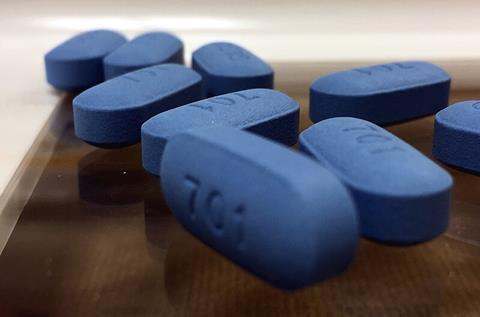To mark World AIDS Day on 1 December 2024, the International Antiviral (formerly AIDS) Society-USA (IAS-USA) published new international guidelines for the treatment and prevention of HIV. The updated recommendations were developed by a panel of volunteer medical experts, including Prof Clara Lehmann of the University Hospital Cologne and the German Center for Infection Research (DZIF).

They are based on significant advances in antiretroviral therapies and new prevention strategies such as pre-exposure prophylaxis. The 2024 guidelines highlight the significant progress made in the fight against HIV while recognising that there is still much to be done to ensure equitable access to life-saving interventions.
Thanks to effective antiretroviral therapy, many people living with HIV can achieve a normal or near-normal life expectancy. As new data and new antiretroviral drugs and formulations become available, recommendations for HIV treatment, clinical management and prevention need to be regularly updated so that healthcare professionals can provide the best care for their patients.
Latest evidence
An international panel of leading experts in HIV research and clinical care identified and reviewed the latest evidence from peer-reviewed literature and conference presentations published between June 2022 and October 2024, as well as data provided by antiretroviral manufacturers.
READ MORE: Isolated viral load test may generate false positive results for people using long-acting PrEP
READ MORE: Trial of rectal microbicide for HIV prevention begins in US
Expert consensus based on the comprehensive review resulted in updated guidelines for the treatment and prevention of HIV infection, associated sexually transmitted infections and the development of cardiovascular disease in people living with HIV. Below is an overview of the recommendations for HIV treatment, prevention and care.
The panel recommends that antiretroviral therapy should be tailored to the individual’s needs, especially for those who cannot tolerate certain HIV drugs. Long-acting injectable therapies are highlighted as a valuable option to help patients adhere to their treatment plans.
HIV prevention strategies
For people at increased risk of HIV exposure, the guidelines emphasise the use of pre-exposure prophylaxis, available as daily oral medication or long-acting injectable options. In addition, doxycycline is recognised as an effective post-exposure prophylaxis to prevent sexually transmitted infections.
The panel stresses the importance of a holistic approach to HIV care. This includes prevention of cardiovascular disease, management of substance use disorders and monitoring of weight changes that may occur during antiretroviral therapy.
Recognising persistent inequities in access to HIV care and prevention, the guidelines recommend targeted solutions to address gaps in underserved communities. Suggested interventions include: expanding access to video telemedicine and mobile health units; using smartphone reminders for medication or injections; and providing adherence support through traditional methods such as pill boxes and regular check-ins by phone or text.
“While remarkable progress has been made in the fight against HIV, much remains to be done to ensure equitable access to life-saving interventions,” says Prof. Clara Lehmann, Deputy Coordinator of the DZIF research area “HIV”. “These updated guidelines provide a comprehensive framework for healthcare professionals around the world to help us deliver better care and move closer to ending the HIV epidemic.”







No comments yet